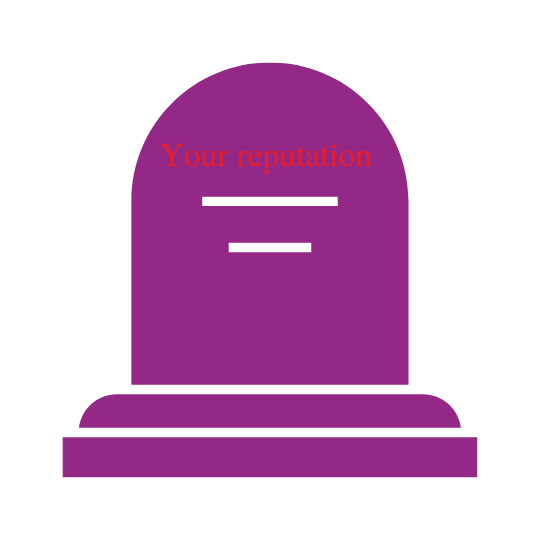
WikiNative specialises in Wikipedia reputation management, also known as legacy management for living people. During economically uncertain times, job layoffs, relationship breakups, and cyber-delinquency give rise to Internet sleuths. Therefore, there are more online threats to your business at the time when you need a fair online presence the most.

Wikipedia entries appear in Google’s Knowledge Graph for most Internet searches. Many people wish to leverage Wikipedia’s ultra-high domain authority to improve their digital reputation. Organisations do this because platforms such as Google indicate Wikipedia as the definition of truth. The little information boxes that appear when a user performs a Google search are known as knowledge panels. And Wikipedia is the most commonly cited source in Google knowledge panels. So yes, Wikipedia contributes to one’s digital reputation. But what if the Wikipedia article contains false, defamatory, or outdated information tarnishing your image?
Wikipedia reputation management principle number one: presumption in favour of privacy

Ironically, Wikipedia reputation management or legacy management has a bad reputation. I feel it’s undeserved. Like all our services, we deliver them within Wikipedia’s content policies. Although I flagrantly violate Wikipedia’s sockpuppetry rules, I do so to protect my clients from anti-business trolls. In the epistemic black market, two wrongs make things right.
Despite its goal to compile all accepted human knowledge, Wikipedia has an extra set of protocols to protect living subjects’ privacy and wellbeing beyond its verifiability, neutrality and sourcing protocols. Naturally, the subject’s right to privacy outweighs the encyclopaedia’s need to document all knowledge. Moreover, if an article about a living subject contains poorly sourced contentious material, then there are grounds for unilateral content removal. Unsurprisingly, most troll victims come to us unaware of their basic Wikipedia rights.
WikiNative specialises in Wikipedia entries about living subjects, also known as BLPs. We prefer to think of reputation management as legacy management. Wikipedia is, first and foremost, an encyclopaedia. And so, when trolls weaponise Wikipedia to harm a living subject, they also damage the encyclopaedia.
Wikipedia reputation management principle number two: source quality

Wikipedia stresses the importance of using high-quality sources in articles concerning living subjects. If material is unsourced or poorly sourced, then editors can remove the contentious material without consent. Interestingly, there’s a symbiosis between poor sourcing and poor encyclopaedic writing. Bad encyclopaedists use unreliable sources to support controversial claims about living subjects. Sometimes trolls cite their blogs which rarely meet Wikipedia’s sourcing standards. To check a source’s reliability, we use the reliable source notice board (WP:RSP). The noticeboard uses a traffic light system to classify approximately three hundred and fifty sources’ reliability.
When creating/editing a BLP, we support statements that are likely to be challenged with a reliable secondary or tertiary source per WP:BLP. We do not include contentious or value statements unless backed by a secondary or tertiary source.
Wikipedia reputation management principle number three: Verify all contentious statements

It bears repeating that any assertions must come from a reliable, secondary source, and its discussion must be neutral. Wikipedia reputation management starts with managing sources. If the contentious material rests upon sources that are not verifiable, then we have a valid reason to fix it. Identifying unverifiable contentious material is frustrating and time-consuming. For example, a more sophisticated troll may obfuscate verifiability by using paywalled sources or by not updating dead links with archived links. It is here that novice editors fall defeated and where clients find value in my services. I know trolls’ tricks to obscure verifiability and smuggle in contentious statements. I’ve been fighting Wikipedia’s trolls for four years, and I’ve seen every trick in the book. My experience in successfully removing contentious material informs my strategies. I owe it to the Wikipedia community and the living subject that the encyclopaedia’s coverage of them is fair.
Identify the manual of style errors
As with notability, Wikipedia has an additional manual of style for editors to adhere to for BLPs. The trolls that weaponise Wikipedia aren’t concerned with the manual of style compliance. During their epistemic crime spree, a troll often forgets basic grammar like apostrophes and concise sentence format. Poor attention to detail is characteristic of those brimming with hate. Spotting those telltale school-person errors gives me grounds to discredit the troll’s contributions.

To summarise, Wikipedia reputation management is as simple as writing Wikipedia entries. Just make a concerted effort to improve the encyclopaedia. Moreover, legacy management starts at birth and continues after death.



